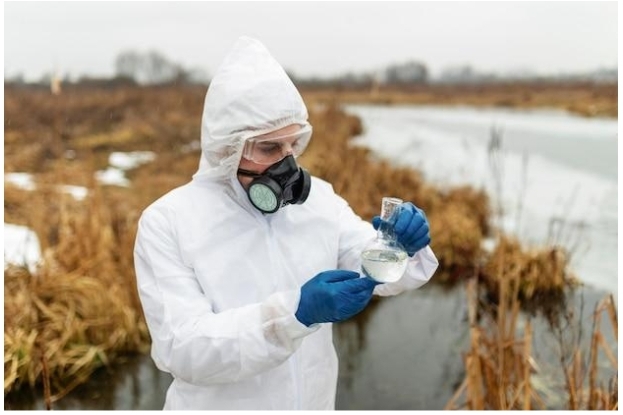
Source: Freepik.com
Biological incidents such as sewage backups or animal waste contamination are not to be underestimated since they are associated with the risk of becoming ill. Even though one will have an impulse to do some cleanup, safety and proper protocol are critical considerations.
Living things can carry bacteria, viruses, and other pathogens that represent health risks. Poor cleanup attempts rather worsen the situation and expose more people to it.
Here are crucial tips for dealing with cleanup after a biological incident:
- 1. Evacuate in case of emergency
- Safety should be the top priority. Ascertain where the biological incident came from and evaluate the level of contamination. If the event is connected to raw sewage or includes a large area of contamination, evacuate the area right away to reduce the level of possible exposure.
- PPE is absolutely necessary, and do not ever attempt to cleanup a biohazard without wearing it. The first thing to do after you have evacuated the affected place is to call on the right authorities for the clearance work to begin. It is of great importance to wear proper PPE while doing these, lest it end with a serious sickness or injury.
- 2. Containment and preventing spread
- If you’ve already ensured safety, then, after that, put your attention on containment. In the case of liquid spills, place absorbent materials such as towels or kitty litter in the spill area to control its spreading. Cordon the contaminated area by using barriers or entrances to prevent the spread of the contamination.
- When the liquid has been contained, clean the area with towels or another absorbent material and properly dispose of it afterwards.
- 3. Finding ethical cleaning professionals
- The biological cleanup is executed with trained personnel and proper gear. DIY cleaning efforts can be unsafe and unsatisfying. Contact a reputable hazard removal expert.
- They own the skillset, the equipment,and the right safety protocols to clean up biohazards safely and effectively, sanitize and treat the contaminated area, and avoid transmitting pathogens.
- For the sake of your family’s and your own health, it is advisable that you allow qualified experts responsible for biological cleanup to be thoroughly trained to do the job.
- 4. Recovery from water damage
- Biological incidents often coincide with water damage. Sewage backups or overflows can lead to significant water damage in your property. After the cleanup service has addressed the contamination, water damage restoration might be necessary.
- These damage restoration professionals can extract excess water, dry out the affected area, and prevent mold growth.
- 5. Keeping insurance companies informed
Documenting the biological incident is crucial. Take pictures and videos of the contaminated area before and after the cleanup. Contact your insurance company promptly and provide them with all the necessary documentation.
They can guide you through the claims process and help cover the costs associated with biohazard cleaning and water damage (if applicable). Additionally, make sure you document any conversations with your insurance company, as well as any other relevant information related tothe cleanup process.